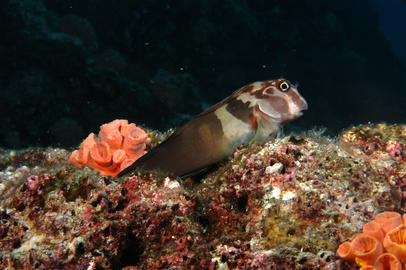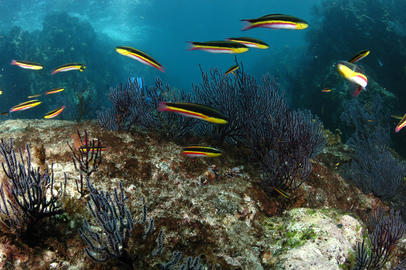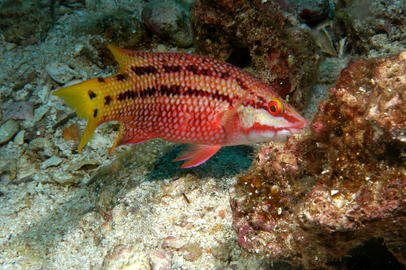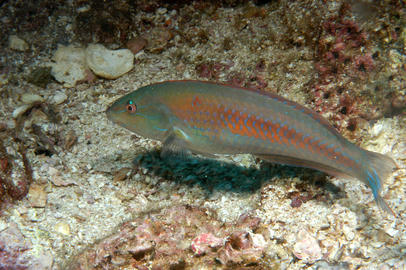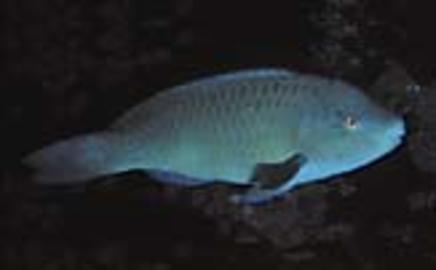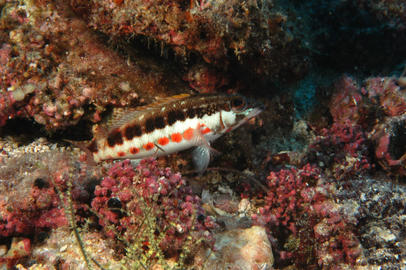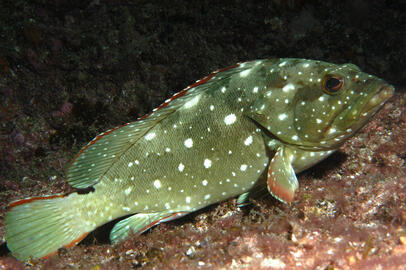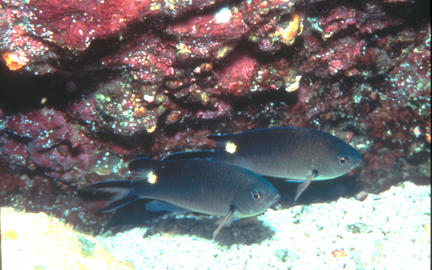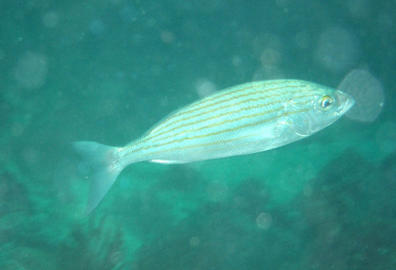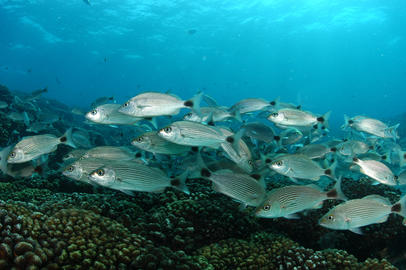Olive to brown; reddish circle around eye. Blunt head with large lips and obvious cirri. Can lack bar markings (as shown in this picture).
TP: Body varies from violet to reddish green; blue dorsal, anal and tail fins.
IP: Dark back, may display a second yellow stripe below dorsal fin. Belly white.
Gray, tinted red to reddish brown or green to blue-green. Large bulbous bump develops on head with age. Also known as the streamer hogfish.
Can change colors rapidly and dramatically. Terminal phase head shades of salmon changing to shades of blue-green on body. Initial phase adults are light reddish brown to bluish white, with dark spot above pectoral fin.
Green; fins marked and shaded with blue and salmon. Adult females and males light blue to gray-blue and dusky blue. Juveniles reddish brown. Tail is square, compared with the similar looking terminal blue-chin parrot that has a lunate tail.
Back gray to brown or yellow-brown; belly white; tail translucent with orangish spots. Often rests on bottom, sitting on pectoral and anal fins.
White spots on the body form horizontal rows (vs. the Cortez grunt that has white spots arranged in oblique rows).

